End of the Nation State
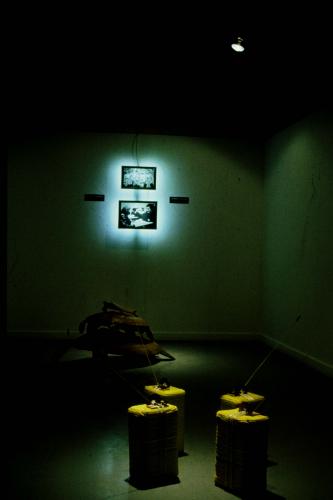
End of the Nation State was the result of a series of thought experiments I did (as a participant and eventually as residency leader) at the End of the Nation States residency at the Banff Centre, throughout 1995. The installation materializes my reflections on what were for me (then) nascent notions of international terrorism, extirpated natural history and computer-controlled pirate broadcasting.
Slide Show:
bomblets

These conceptual bomblets, (rendered harmless as the explosive charges had been replaced with common dirt) had an obvious triggering mechanisms, which I constructed using a match attached to a sprung mouse trap. When triggered by disturbing a long stalk of grass, the match would strike by rubboing against an arc of sand paper, making for a twitchy gallery-going experience!
installation shot
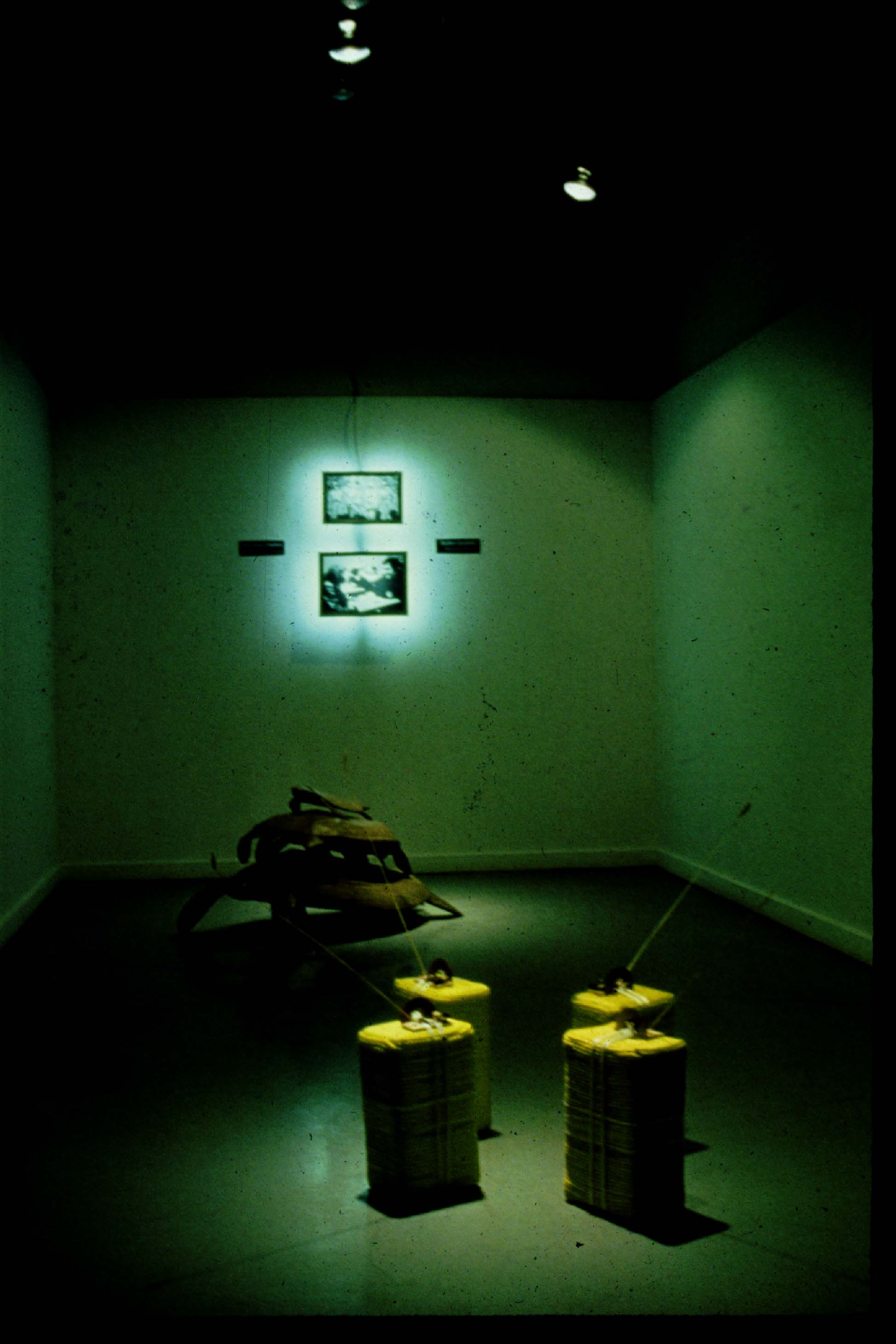
An overall view of the installation at the Glyde Hall gallery space.
light boxes
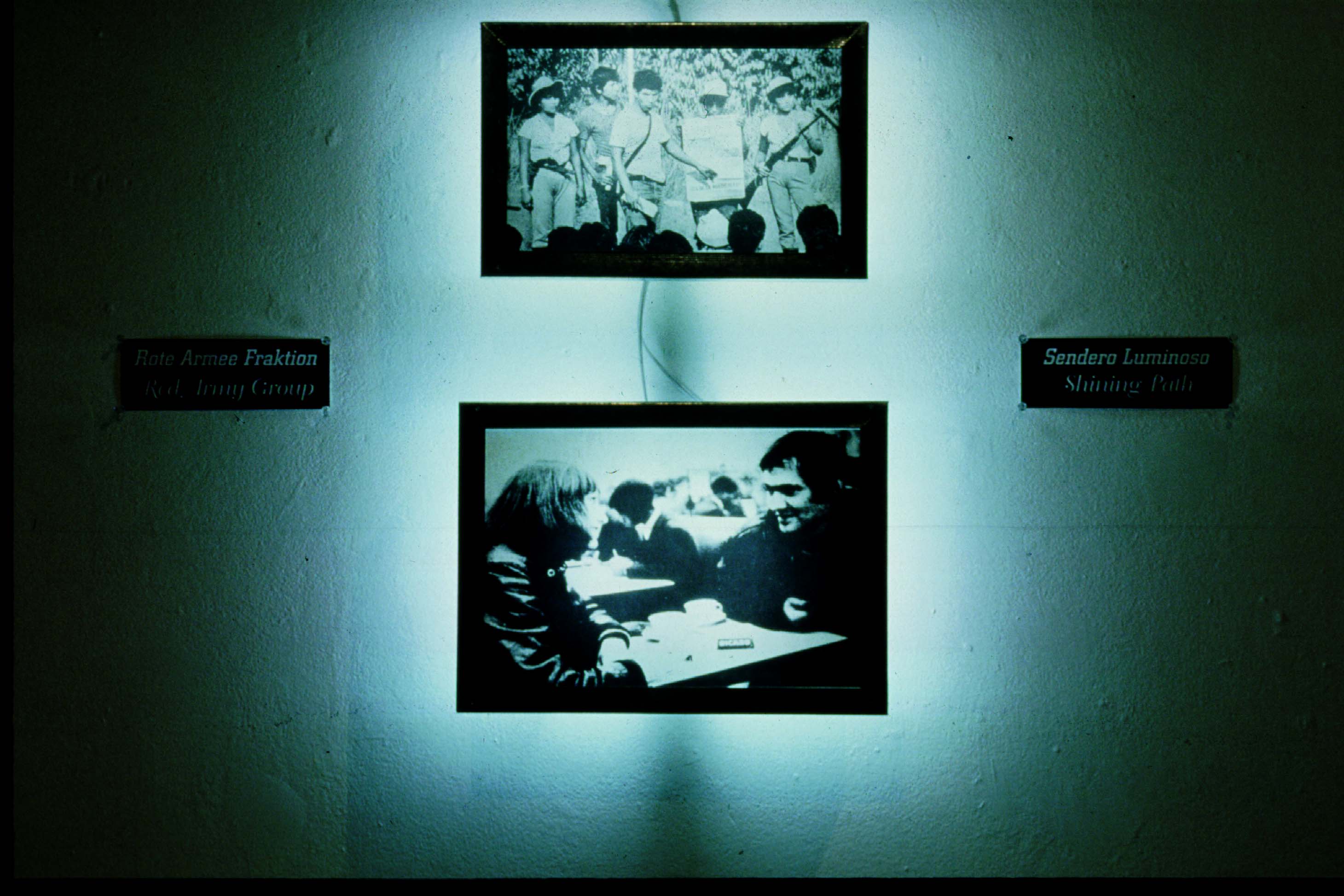
These light boxes were reproductions of newspaper clippings showing members of the Baader-Meinhof Group and the Peruvian Shining Path (Sendero Luminoso). Though we were still in the early 1990's I was responding to the intuition I had that: as the social institutions of nation states continued to decline to be replaced by an anti-social, globalized state of capitalism, terrorism would re-emerge as a widespread reaction.
sequenced clock radios
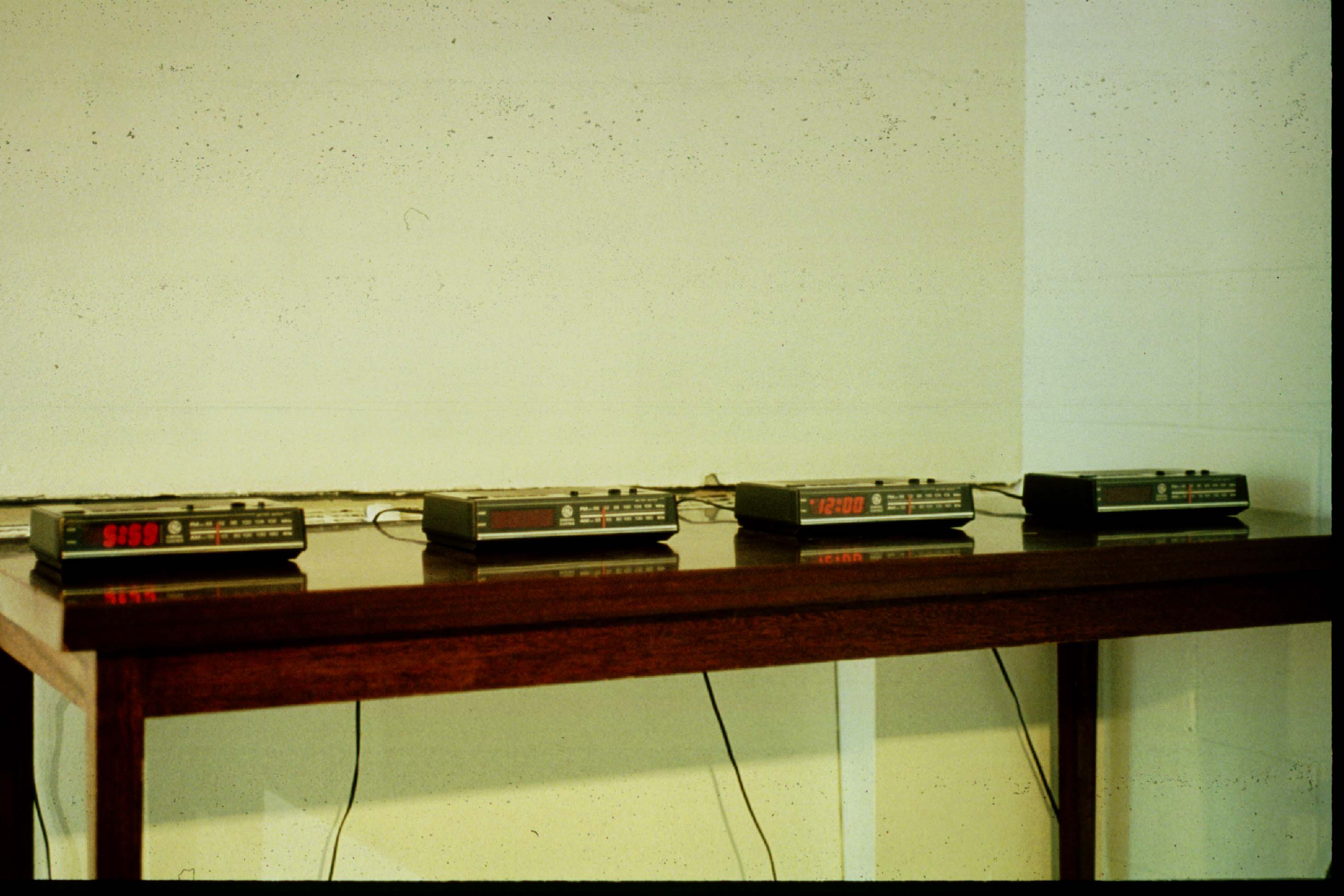
I borrowed these clock radios from the Banff Centre dormitories. They were tuned to a small pirate FM transmitter I constructed to broadcast 24 hour a day salsa music, in house.
I controlled the clock radios through a programmable X-10 system, which transmitted signals through the building's electical system that turn then off and on in sequence allowing the broadcast to 'magically' travel from one radio to the next as if the appliances were somehow 'haunted.'
turtle fetish objects
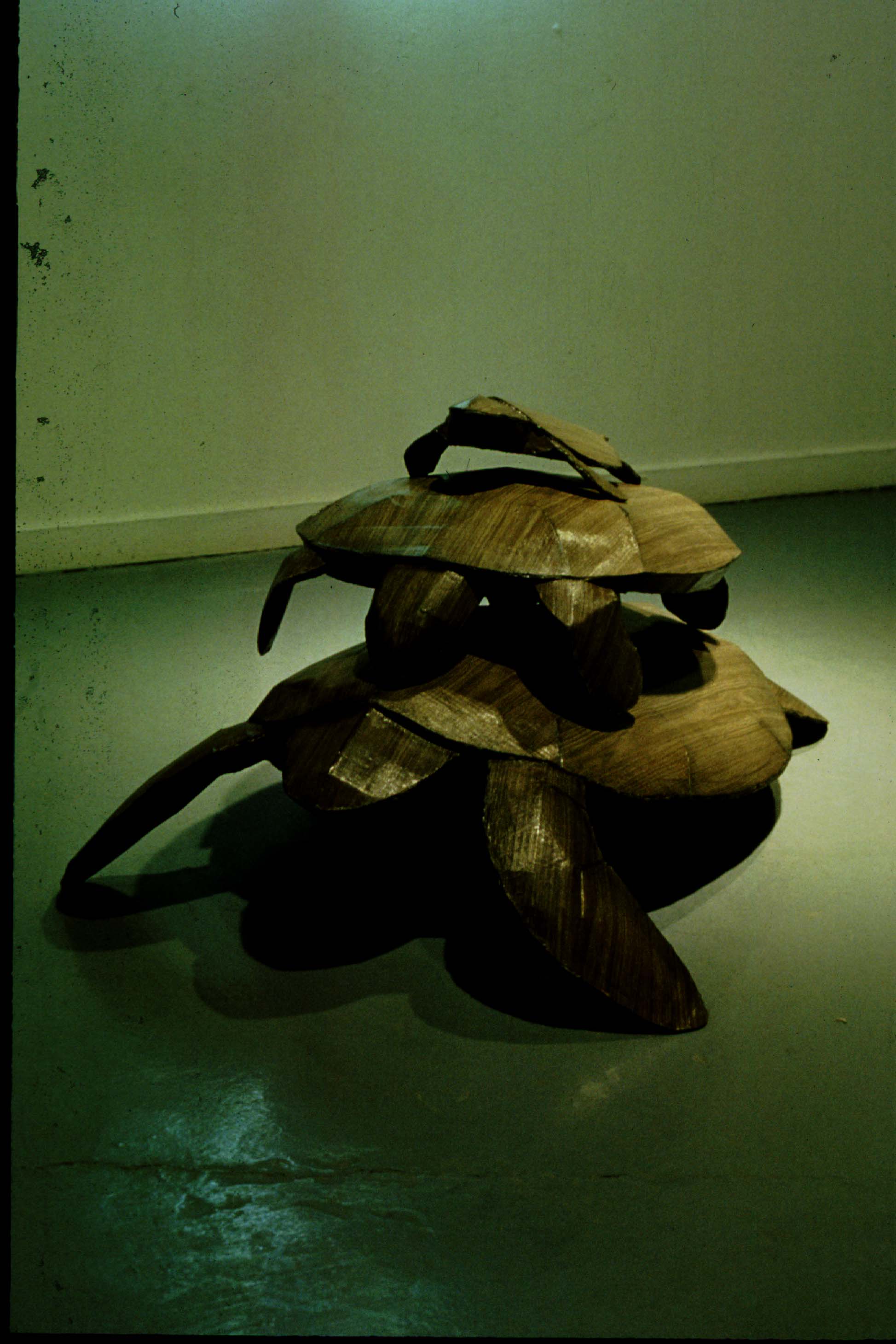
These fake wooden turtles are cardboard mock-ups of the actual wooden turtles once used by the Cuna Indians in Panama, who employed them as decoys to capture real sea turtles, who would try to mate with their wooden simulacra. Michael Taussig describes this in his (1993) book - Mimesis and Alterity.
